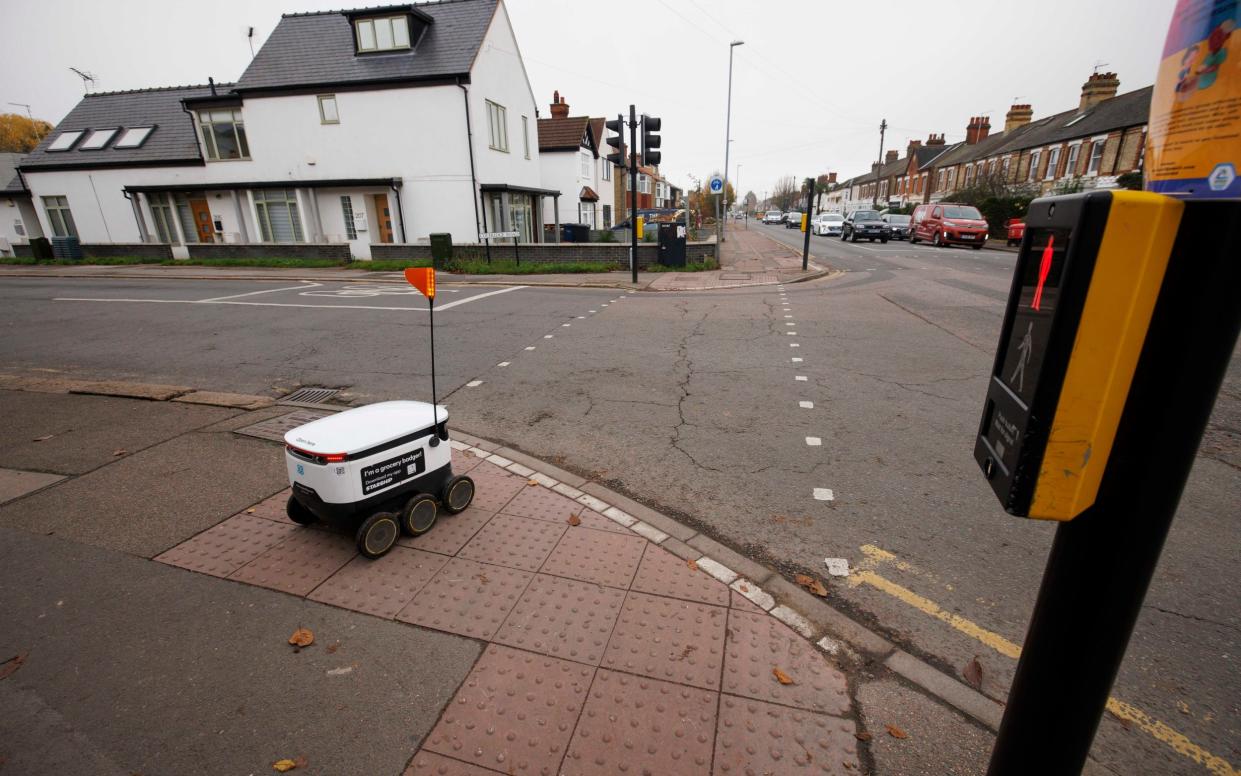Food delivery robots will soon control traffic lights like humans

Robots will be able to control pedestrian traffic lights for the first time to enable them to cross roads and deliver groceries and takeaways quicker.
Hundreds of the autonomous six-wheeled vehicles are already making deliveries in locations such as Milton Keynes, Manchester, Leeds, Wakefield, Bedford and Northampton.
Packed with sensors and artificial intelligence to detect cars, people and obstacles, they can navigate their way across roads using preset maps that have identified the safest spots for crossing.
They are also fitted with voice boxes so they can ask people to press the buttons at pedestrian crossings so they can make their deliveries to customers’ homes after picking up their supermarket groceries.
Until now, however, they have been unable to autonomously change the pedestrian lights so they can safely cross roads after stopping traffic.
Starship Technologies, the multinational company which already operates around 400 of the robots in the UK, is working with councils to link them up with traffic lights so they can turn them red and cross the road in the same way as any pedestrian carrying their groceries.
Henry Harris-Burland, the vice president of Starship, said: “We’re in the exciting early stages of using the technology between our robots and the traffic lights on some crossings in cities where we operate”
The robots operate without human intervention, receiving orders for groceries or takeaways from customers before trundling at human walking pace to the supermarket or restaurant to pick up the goods.
They then deliver it to the door of the customer, who can follow its progress on an app. When it arrives, the customer uses a QR code on their phone to unlock the lid to get their groceries from the robot, which looks like a knee-high, black and white buggy.
Delivery costs vary between 99p to £2.49, depending on the distance it has to travel. It is designed for “top-up” shopping – usually two or three bags of groceries that would be uneconomic for a delivery driver to bring to a household but not for a robot.
A prototype of the robot was first designed for a Nasa competition more than a decade ago, when the space agency was seeking robots able to collect rock samples on Mars or the Moon. While it did not win, the model’s engineers, based in Tallinn, Estonia, thought it was perfect for food deliveries.
To explore the idea, Ahti Heinla and Janus Friis, the co-founders of the online call service Skype, created Starship Technologies in London in 2014.
Calls to update archaic road laws
The robots can navigate six-inch road kerbs, but not stairs. They let off a siren if picked up by potential vandals and travel on pavements with sensors to avoid pedestrians.
However, robot manufacturers are pressing for Britain’s archaic transport laws to be overhauled as the intelligent machines can fall foul of Section 72 of the 1835 Highway Act, which bars riding “carriages” on pavements.
Research by Oxford Analytica suggested that new laws allowing autonomous robots to operate across the UK could generate £50 million of annual investment, 1,200 tech and science jobs and a 25 per cent growth in restaurant revenue across cities.
Backers also pointed to a social benefit as 25 per cent of Starship’s customers are disabled or carers looking after disabled people. The latest version of the robots are now capable of wireless charging, which means they can operate 24/7 without having to spend six or seven hours back at their hub replenishing their energy.

 Yahoo News
Yahoo News 
